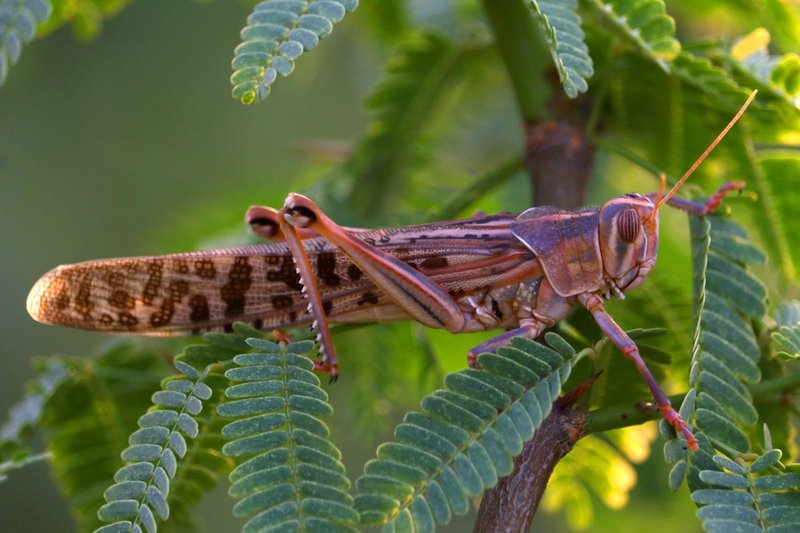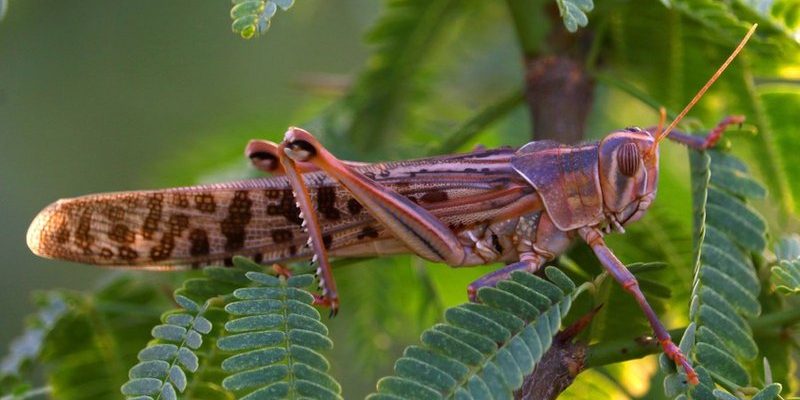
Locusts are part of the grasshopper family and can be found on almost every continent, but they primarily thrive in dry, warm areas. Their transition from solitary to gregarious behavior is truly remarkable, allowing them to adapt to environmental pressures and food resources. So let’s dive in and see where locusts call home and how they’ve evolved to survive in various conditions.
Where Do Locusts Typically Live?
Locusts are quite versatile when it comes to their habitats. You might find them in arid or semi-arid regions, but they also inhabit grasslands and even some agricultural areas. Their favorite spots are typically characterized by:
- Warm Temperatures: Locusts thrive in environments where the weather is warm, as they need the heat to grow and reproduce.
- Dry Conditions: These insects prefer areas with limited rainfall, which allows them to access the food sources they love, like grasses and crops.
- Vegetation: Locusts need plenty of foliage to munch on, so they often settle in places rich in plant life.
You might be wondering how locusts manage to spread across such vast territories. Well, when conditions are just right, and their populations grow, they can migrate long distances in search of food. Think of them as nature’s nomads, moving wherever they find the resources they need to survive.
The Life Cycle of a Locust: Habitat Influence
The life cycle of a locust consists of three main stages: egg, nymph, and adult. Each stage is heavily influenced by their habitat:
Egg Stage
Locusts lay their eggs in the ground, often in sandy or loose soil. Here’s the thing: the temperature and moisture levels can impact how quickly the eggs hatch. If the conditions are favorable, the eggs can hatch in just a couple of weeks.
Nymph Stage
After hatching, locusts go through a series of molts before becoming adults. During this nymph stage, they’re vulnerable. They need a solid food supply and the right climate to grow properly. If they find themselves in a harsh environment, they might struggle to survive, which is why they gravitate toward more hospitable areas.
Adult Stage
Once they reach adulthood, locusts are ready to mate and reproduce. In warm, lush environments, they can quickly multiply, leading to swarms. These swarms can devastate crops, making them notorious agricultural pests. But it’s also a fascinating defense mechanism; swarming helps them stay safe from predators.
How Locusts Adapt to Their Environment
Adaptation is key to a locust’s survival. Here’s how these remarkable insects adjust to their surroundings:
- Color Changes: When locusts are solitary, they’re often a dull green or brown, allowing them to blend into their surroundings. But when they form swarms, they turn a bright yellow or even pink. This change serves as a warning sign to potential predators.
- Behavior Shifts: Solitary locusts tend to be more cautious, while gregarious ones are bolder and more social. This shift in behavior helps them thrive in groups, which is critical when they’re on the move looking for food.
- Increased Reproductive Rates: The denser the locust population, the more they tend to reproduce. This helps them quickly capitalize on available resources in their environment.
You might think of locusts adapting like a chameleon blending into its surroundings. The ability to change their behavior and appearance gives them a fighting chance against environmental challenges.
The Role of Climate in Locust Habitats
Climate plays a huge role in where locusts live and how they thrive. Changes in temperature and rainfall can greatly affect their populations.
For instance, heavy rainfall might lead to a lush environment, which initially seems great for locusts. But too much moisture can also trigger outbreaks. When conditions turn dry, locusts can survive longer in their nymph stage, waiting for better opportunities.
In the long run, shifts in climate could lead to more frequent outbreaks in some regions. Researchers track these patterns to predict when and where locusts might gather next. It’s like trying to read the weather, but with insects!
Locusts and Agriculture: A Double-Edged Sword
While locusts are incredibly adaptable, their presence can pose serious challenges for agriculture.
When swarming, these insects can consume everything in their path, leaving farmers to cope with the aftermath. It’s heartbreaking to watch crops get devoured, especially after all the hard work that goes into growing them.
However, understanding their habitats and habits can help farmers prepare. For instance, if farmers know that locusts prefer certain conditions, they can implement measures to protect their crops, such as:
- Regular Monitoring: Keeping an eye on locust populations can help farmers take action before swarms form.
- Integrated Pest Management: Using a mix of strategies, like biological controls and resistant crop varieties, helps manage locust threats.
By understanding where locusts live and how they adapt, farmers can find ways to coexist with these resilient insects.
Innovations in Locust Control
As we continue to learn about locusts, innovative methods are emerging to manage their populations. Farmers, researchers, and scientists are coming together to develop strategies that prioritize sustainability.
One such method includes using biopesticides derived from naturally occurring bacteria, which target locusts without harming other wildlife. Additionally, satellite technology helps monitor locust movements and predict outbreaks, giving farmers a head start on potential swarms.
These innovations demonstrate how understanding locust behavior and habitats can lead to real solutions for farmers. It’s a reminder of the balance between nature and agriculture and how we can find ways to adapt together.
Locusts may be small, but their impact can be enormous. From their diverse habitats to their remarkable adaptations, these insects are a perfect example of how nature works. They can turn a desolate landscape into a feast, making their survival impressive yet troublesome for agriculture.
By studying their habits and understanding their environments, we can find ways to manage them effectively. So next time you hear about a locust swarm, think about the incredible journey these tiny insects take and how they’ve adapted to thrive in our world. They’re not just pests; they’re survivors navigating the challenges of nature.

